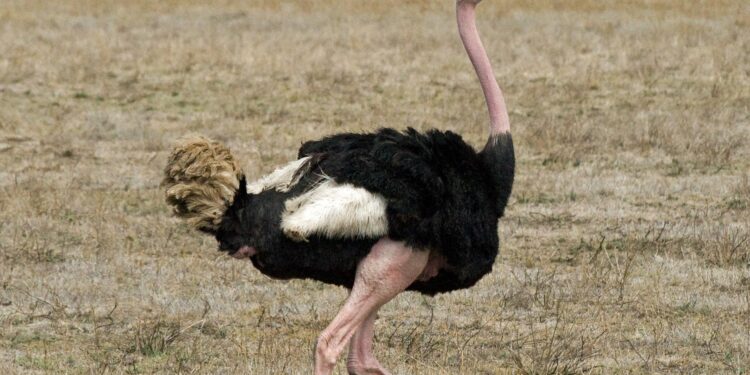In a groundbreaking development that blurs the lines between science fiction and reality, scientists are embarking on a mission to resurrect the tallest bird to have ever lived on Earth. According to NDTV, researchers are leveraging advanced genetic technologies in a bid to bring back the colossal elephant bird, which stood over 10 feet tall and roamed Madagascar until its extinction centuries ago. This ambitious project not only promises to shed light on the mysteries of prehistoric ecosystems but also raises important ethical and ecological questions about de-extinction efforts.
Scientists Plan Breakthrough De-Extinction of the World’s Tallest Bird
In a remarkable leap for conservation science, researchers are spearheading efforts to bring back the elephant bird, an extinct species once towering over all other avians. Measuring up to 3 meters in height and weighing nearly 500 kilograms, this colossal bird roamed Madagascar until about 1,000 years ago. By leveraging cutting-edge genetic technologies and extensive fossil records, teams aim to reconstruct the elephant bird’s genome and begin the delicate process of de-extinction. Scientists emphasize that this initiative not only represents a triumph in biodiversity recovery but also offers invaluable insights into ecosystem restoration and evolutionary biology.
Key milestones for the project include:
- Extraction and sequencing of ancient DNA from well-preserved eggshells
- Genome editing to address gaps using genomes of closely related species
- Collaborations with zoological institutions to prepare surrogate hosts
- Ethical assessments to ensure ecological and environmental safety
| Parameter | Elephant Bird | Modern Relative |
|---|---|---|
| Height | Up to 3 meters | Ostrich – 2.7 meters |
| Weight | ~500 kg | Ostrich – 145 kg |
| Egg Size | Largest bird egg ever, up to 34 cm long | Ostrich egg – 15 cm long |
Exploring the Ecological Impact and Ethical Considerations of Reviving the Giant Bird
Resurrecting the tallest bird ever to roam the Earth presents unprecedented challenges, not just scientific but ecological. Conservationists warn that introducing an extinct species back into modern ecosystems could disrupt existing food chains and habitats. The giant bird’s colossal size would demand vast resources, potentially putting pressure on local flora and fauna. Additionally, there is uncertainty about how this ancient species would adapt to contemporary climates and environmental conditions that have since evolved.
Beyond environmental concerns lie complex ethical debates. Critics question the morality of reviving a creature long erased by natural processes, suggesting that resources might be better allocated toward protecting endangered species currently facing extinction. Supporters argue the project could galvanize interest in biodiversity and advance genetic research. The table below summarizes some of the key ecological risks and ethical questions scientists and the public must weigh:
| Consideration | Potential Impact |
|---|---|
| Habitat Disruption | Alteration of existing ecosystems due to resource competition |
| Species Interaction | Unpredictable effects on predators and prey dynamics |
| Genetic Ethics | Dilemmas surrounding manipulation of extinct genomes |
| Conservation Priorities | Resource allocation between revival projects and threatened species |
Recommendations for Global Collaboration and Conservation Strategies in De-Extinction Projects
Ensuring the success of de-extinction efforts relies heavily on robust international collaboration. Cross-border scientific partnerships enable the sharing of genetic data, ecological knowledge, and advanced biotechnological tools necessary for resurrecting and sustaining species such as the tallest bird ever known. Governments, research institutions, and conservation organizations must unite under transparent frameworks that prioritize ethical standards and biodiversity preservation. Key strategies include:
- Pooling resources to fund long-term habitat restoration projects tailored to the resurrected species’ needs.
- Implementing shared genetic banks and open-access databases for continuous monitoring and research.
- Developing international protocols for specimen transport, breeding programs, and reintroduction efforts.
Beyond collaboration, proactive conservation strategies are imperative to prevent past extinctions from repeating. Integrating restored species into ecosystems demands adaptive management plans that consider climate change, human interference, and existing wildlife dynamics. The table below outlines a simplified framework for conservation priorities post-de-extinction, emphasizing balance and sustainability:
| Priority Area | Key Actions | Expected Outcome |
|---|---|---|
| Habitat Sustainability | Reforestation, Wetland Restoration | Self-sufficient ecosystems |
| Genetic Diversity | Selective breeding programs | Resilience to diseases |
| Habitat Sustainability | Reforestation, Wetland Restoration | Self-sufficient ecosystems |
| Genetic Diversity | Selective breeding programs | Resilience to diseases |
| Population Monitoring | Regular health and behavior assessments | Early detection of issues |
| Community Engagement | Educational programs and local stewardship | Enhanced coexistence and support |































